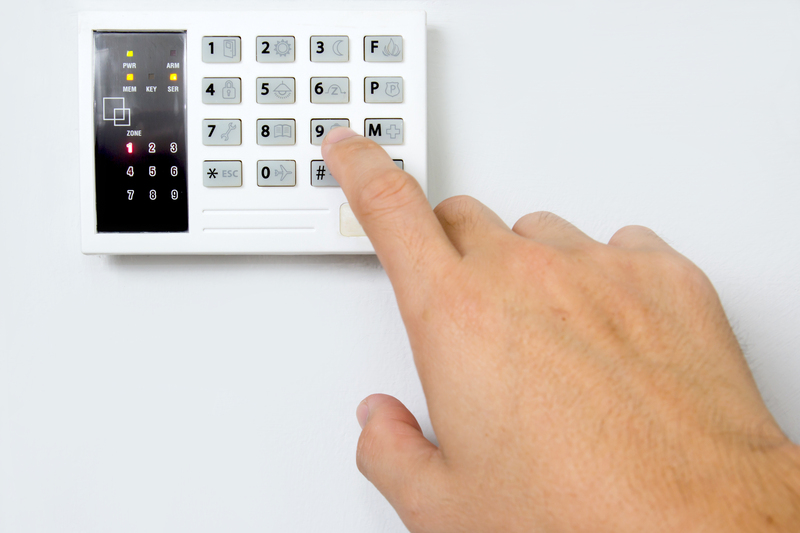How to Pack Clothes, Electronics, and Kitchenware for Moving
Moving to a new place can be both exciting and overwhelming, especially when it comes to packing your belongings. Among the most crucial items to pack correctly are clothes, electronics, and kitchenware. Ensuring these essentials are organized and protected not only saves you time and energy but also prevents damage and loss. This comprehensive guide will walk you through the best ways to pack clothes, electronics, and kitchenware for moving safely and efficiently, using practical techniques and packing tips.

The Importance of Proper Packing
Whether you're moving across town or the country, improper packing can lead to broken electronics, wrinkled clothes, or shattered kitchenware. Using the correct packing materials and methods prevents damage while keeping unpacking stress to a minimum. Before you begin, ensure that you have the right moving supplies on hand, such as:
- Sturdy boxes in various sizes
- Bubble wrap and packing paper
- Packing tape and scissors
- Marker pens for labeling
- Plastic wrap or stretch film
- Garbage bags for clothes
How to Pack Clothes for Moving
1. Sort and Declutter Your Wardrobe
Before you start packing clothes for moving, take the time to go through your wardrobe. Getting rid of unwanted items reduces your load and helps you save space and money. Consider donating, selling, or discarding clothes you no longer wear.
2. Choose the Ideal Packing Method
There are several efficient ways to pack clothes for a move, depending on the type of clothing and distance of your move:
- Wardrobe Boxes: These are tall boxes with a hanging rail, ideal for packing suits, dresses, and coats directly from your closet.
- Suitcases and Duffel Bags: Take advantage of your luggage, especially for packing heavy or bulky items like jeans and sweaters.
- Garbage Bags: A budget-friendly option for packing clothes on hangers -- just slip a bunch of hanging clothes into a large clean bag and tie around the top of the hangers.
- Folded Method: Traditional folding works for most casual clothes and can be packed neatly into standard boxes.
- Roll Packing: Rolling clothes is outstanding for saving space and minimizing wrinkles, great for t-shirts, pajamas, and light fabrics.
3. Packing Tips for Clothes
- Layer your clothes with tissue paper for delicate items like silk or linen.
- Use vacuum storage bags to compress and protect seasonal clothes, such as winter jackets and bedding.
- Pack shoes separately in shoe boxes or plastic bags to avoid dirt transfer.
- Label each box or bag by room or category for easier unpacking.
How to Pack Electronics for Moving
1. Prepare Your Electronics
Packing electronics for a move requires extra caution due to their fragility and value. Start by:
- Backing up important data on hard drives, laptops, and phones.
- Removing batteries from devices where possible to prevent corrosion and leakage.
- Taking photos of cable connections for easier setup in your new home.
2. Gather Packing Materials
To pack electronics for moving, you will need:
- Original boxes and packing materials (if available)
- Anti-static bubble wrap
- Sealable plastic bags for cables and accessories
- Sturdy cardboard boxes (double-walled for extra protection)
- Soft cloths or towels for padding
3. Packing Instructions for Electronics
- Wrap each device with an anti-static bubble wrap and secure with packing tape.
- Place items in boxes vertically to absorb shock during transit.
- Use padding (towels, packing peanuts) to fill empty spaces and prevent movement inside the box.
- Pack cords and accessories separately in labeled ziplock bags and place them in the same box as the device.
- Clearly label the box as "Fragile - Electronics" and note which room it belongs to.
4. Special Tips for Electronics
- Do not stack heavy items on top of electronics to avoid crushing them.
- Avoid extreme temperatures--keep boxes with electronics out of direct sunlight and away from heat sources.
- Wait 24 hours before plugging in electronics after unloading, especially if moving in cold weather, to allow condensation to dissipate.
How to Pack Kitchenware for Moving
1. Sort and Organize Kitchen Items
The kitchen can be one of the most time-consuming rooms to pack. Start by:
- Decluttering pans, dishes, and utensils you no longer use.
- Setting aside essentials you'll need right before and after the move (coffee maker, a few plates, etc.).
2. Packing Fragile Kitchen Items
- Wrap dishes and glasses individually using bubble wrap or packing paper.
- Pack plates vertically (like records) to minimize risk of breakage.
- Use cell divider boxes for glasses and stemware, and fill gaps with crumpled paper.
- Label each box as "Fragile - Kitchen", and note the contents for easier unpacking.
- Bundle silverware in small stacks and wrap them securely in kitchen towels.
3. Pots, Pans, and Appliances
- Nest pots and pans together, placing paper or bubble wrap between each item to avoid scratches.
- Place small appliances (toaster, blender) in their original boxes, or wrap in bubble wrap and place in sturdy boxes.
- Secure moveable parts with tape and remove all blades from appliances where possible.
4. Special Kitchenware Packing Tips
- Pack tightly but don't overfill boxes to prevent boxes from collapsing or not closing properly.
- Protect sharp items such as knives by wrapping them in dish towels and securing with rubber bands before boxing them.
- Label each box with detailed contents, such as "Cups & Plates" or "Pots & Pans".
- Keep cleaning supplies separate and never pack them with food or edible items.
General Moving and Packing Tips
- Create a moving checklist and timeline to stay organized throughout the process.
- Pace yourself--start packing non-essentials weeks before your move.
- Weigh your boxes periodically to prevent overloading. Boxes should not exceed 50lbs to be safe for lifting.
- Label every box on at least two sides with a detailed description and the destination room.
- Pack a "first-night" box with clothes, snacks, electronics chargers, and basic kitchenware for easy access on arrival.

FAQ: Packing Clothes, Electronics, and Kitchenware for Moving
What is the best way to pack clothes for moving?
Use a combination of wardrobe boxes for hanging clothes, suitcases for folded items, and vacuum bags for seasonal or bulky garments. Garbage bags can be used for quick, low-cost transport of hanger clothes, but ensure they are clean and plastics don't damage delicate fabrics.
How do I protect electronics during a move?
Use the original packaging whenever possible and wrap devices with anti-static bubble wrap. Fill in all empty spaces in boxes with padding to avoid movement. Transport electronics yourself if you can, and mark all boxes as fragile.
How do I safely pack kitchenware?
Wrap every item individually, especially glassware and plates. Use dividers for stemware and fill all gaps in boxes to prevent shifting. Don't mix heavy pots with delicate dishes, and always label boxes clearly as "fragile."
Should I use professional packers for clothes, electronics, or kitchenware?
If you have expensive electronics, fine china, or a large wardrobe, professional packing services can be a worthwhile investment. However, with careful planning and the right materials, most people can pack their belongings safely themselves.
Conclusion: A Stress-Free Move Starts with Smart Packing
Knowing how to pack clothes, electronics, and kitchenware for moving is crucial to an efficient, damage-free move. Start early, gather your supplies, and use the packing methods detailed above for each category of belongings. Protect fragile items, maximize space, and label everything. By organizing in advance and paying special attention to delicate and essential items, you'll set yourself up for a move that's as quick and painless as possible. Remember, an organized move is a happy move--good luck and happy moving!